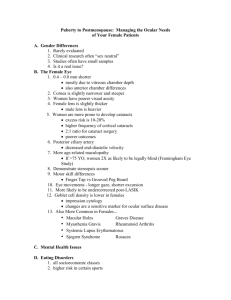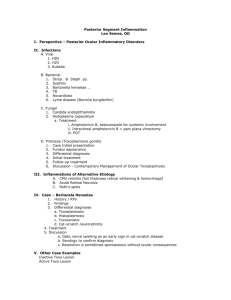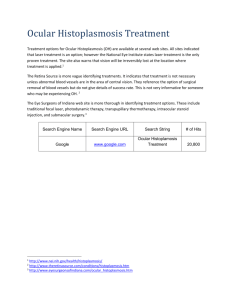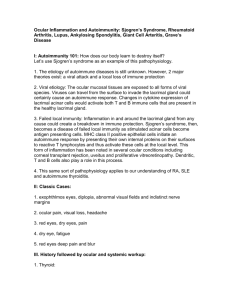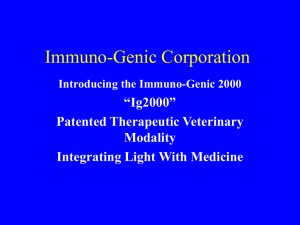The Optometrists` Role in Managing Chronic Graft versus Host
advertisement
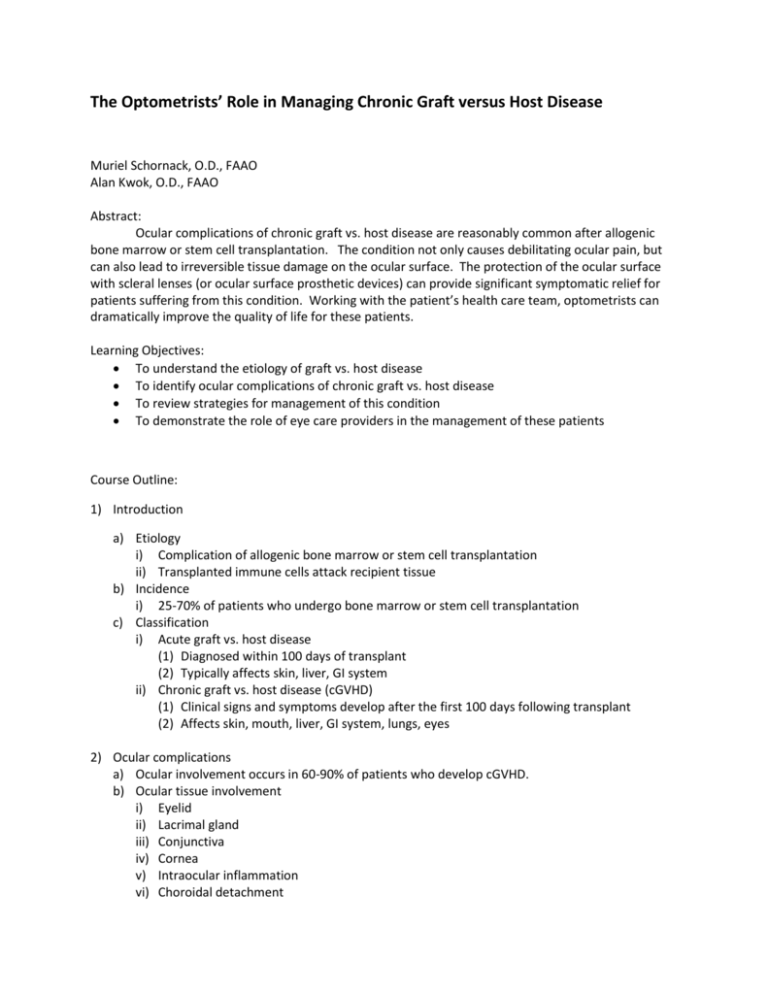
The Optometrists’ Role in Managing Chronic Graft versus Host Disease Muriel Schornack, O.D., FAAO Alan Kwok, O.D., FAAO Abstract: Ocular complications of chronic graft vs. host disease are reasonably common after allogenic bone marrow or stem cell transplantation. The condition not only causes debilitating ocular pain, but can also lead to irreversible tissue damage on the ocular surface. The protection of the ocular surface with scleral lenses (or ocular surface prosthetic devices) can provide significant symptomatic relief for patients suffering from this condition. Working with the patient’s health care team, optometrists can dramatically improve the quality of life for these patients. Learning Objectives: To understand the etiology of graft vs. host disease To identify ocular complications of chronic graft vs. host disease To review strategies for management of this condition To demonstrate the role of eye care providers in the management of these patients Course Outline: 1) Introduction a) Etiology i) Complication of allogenic bone marrow or stem cell transplantation ii) Transplanted immune cells attack recipient tissue b) Incidence i) 25-70% of patients who undergo bone marrow or stem cell transplantation c) Classification i) Acute graft vs. host disease (1) Diagnosed within 100 days of transplant (2) Typically affects skin, liver, GI system ii) Chronic graft vs. host disease (cGVHD) (1) Clinical signs and symptoms develop after the first 100 days following transplant (2) Affects skin, mouth, liver, GI system, lungs, eyes 2) Ocular complications a) Ocular involvement occurs in 60-90% of patients who develop cGVHD. b) Ocular tissue involvement i) Eyelid ii) Lacrimal gland iii) Conjunctiva iv) Cornea v) Intraocular inflammation vi) Choroidal detachment c) Ocular surface disease is the most common manifestation of cGVHD i) Description of ocular surface disease (1) Severe keratoconjunctivitis sicca (2) Cicatricial conjunctivitis (3) Corneal scarring (4) Progressive corneal neovascularization (5) Corneal perforation ii) Etiology of ocular surface disease (1) Lacrimal insufficiency (2) Meibomian gland dysfunction (3) Lid disorders (4) Effects of radiation or chemotherapy d) Characteristics of ocular surface disease i) Bilateral, often asymmetric ii) May be present in isolation or in conjunction with disease in other organ systems 3) Treatment and management of ocular complications of cGVHD a) Copious lubrication b) Punctal occlusion c) Management of Meibomian gland dysfunction d) Autologous serum e) Topical cyclosporine (Restasis) f) Kineret (I’m not familiar with this. . .) g) Surgical intervention i) Tarsorrhaphy ii) Amniotic membrane transplant h) Scleral lenses i) Advantages (1) Continuous corneal hydration (2) Protection of conjunctival tissue (3) Less invasive than surgical intervention (4) Can be used in combination with other medical measures ii) Considerations for scleral lens prescription and management in patients with cGVHD (1) Concurrent management of Meibomian gland dysfynction (2) Moisture chamber glasses (3) Maintenance of anterior lens surface 4) Conclusion a) Coordinated management with other health care providers is essential i) Ophthalmology ii) Dermatology iii) Hematology iv) Gastroenterology v) Hepatology vi) Pulmonary specialists b) Optometrists are uniquely equipped to significantly improve the quality of life in patients with cGVHD. Muriel Schornack, O.D., FAAO Lynnette Johns, O.D., FAAO and/or Alan Kwok, O.D. Abstract: Ocular complications of chronic graft vs. host disease are reasonably common after allogenic bone marrow or stem cell transplantation. The condition not only causes debilitating ocular pain, but can also lead to irreversible tissue damage on the ocular surface. The protection of the ocular surface with scleral lenses (or ocular surface prosthetic devices) can provide significant symptomatic relief for patients suffering from this condition. Working with the patient’s health care team, optometrists can dramatically improve the quality of life for these patients. Learning Objectives: To understand the etiology of graft vs. host disease To identify ocular complications of chronic graft vs. host disease To review strategies for management of this condition To demonstrate the role of eye care providers in the management of these patients


